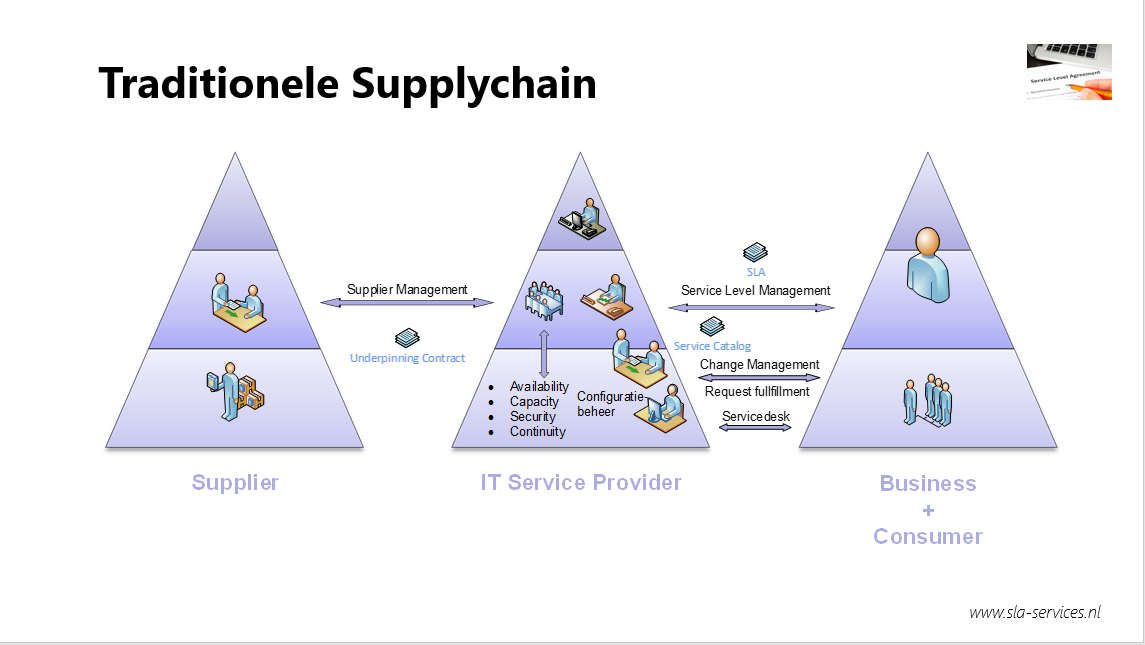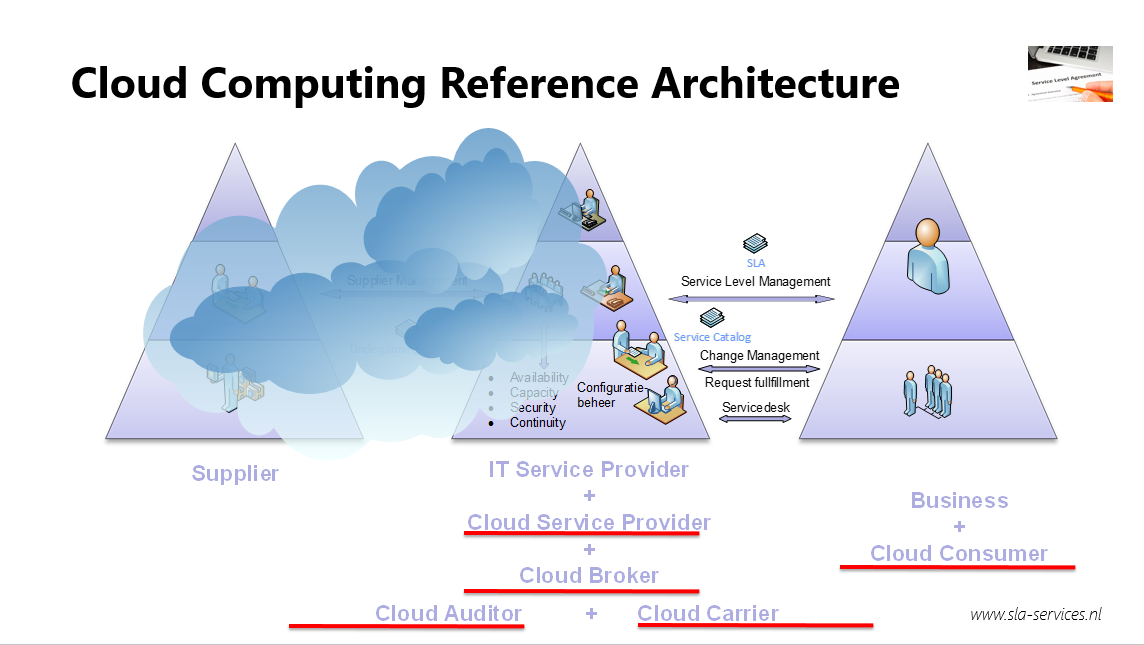What does it mean?
In a nutshell.
What does it mean? Cloud computing offers many advantages, based on cloud characteristics such as ‘on demand self-service’, ‘rapid elasticity’ and ‘metered usage’. The result is that organizations can save significant costs and at the same time deliver more flexible, mobile and scalable services. But cloud also introduces new risks and challenges. Both for the provider and the consumer.
The dynamics of cloud services can no longer be captured in a paper SLA or a static CMDB. Your change process is also disrupted because there is not always time to do a good impact analysis. Moreover, services can be requested quickly, approval is no longer in the purchasing department, and deployment is largely automated. That is why the IT Service Management (ITSM) processes have to be revised or even re-invented. In addition, the existing ITIL processes must continue to work in hybrid environments. ITSM and CSM (Cloud Service Management) will complement each other.
Cloud computing is not technology!
There are many frameworks and methods for managing and operating IT Services. In many cases, cloud computing is described as a business model for the use of underlying technology, and not as technology itself. Virtualization is the underlying technology for cloud and provides the basis for the application of cloud computing services.


